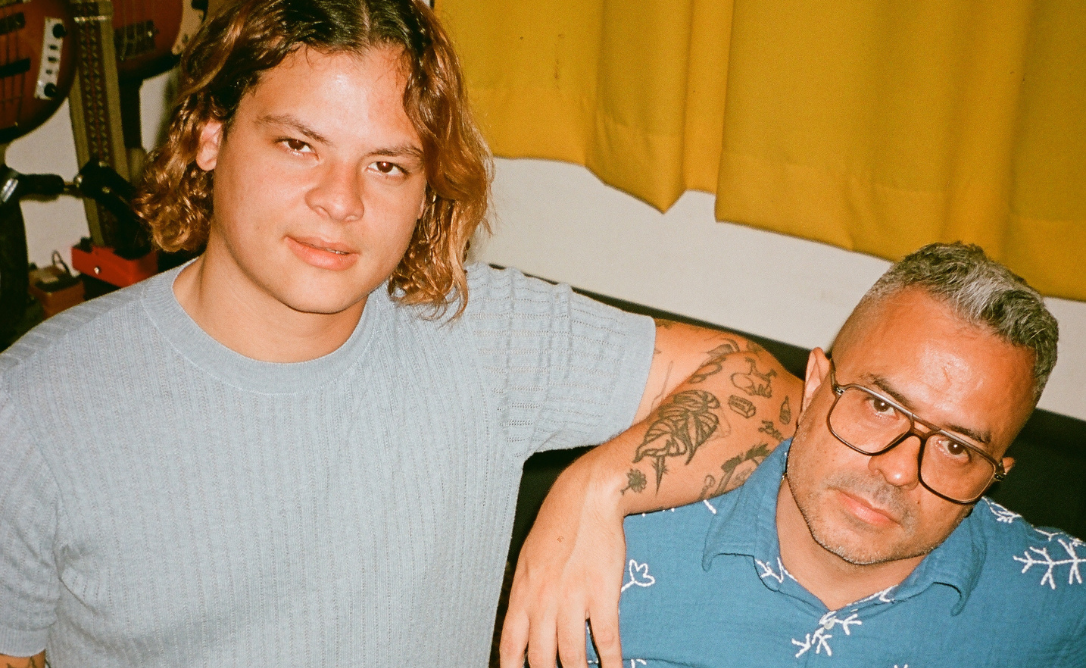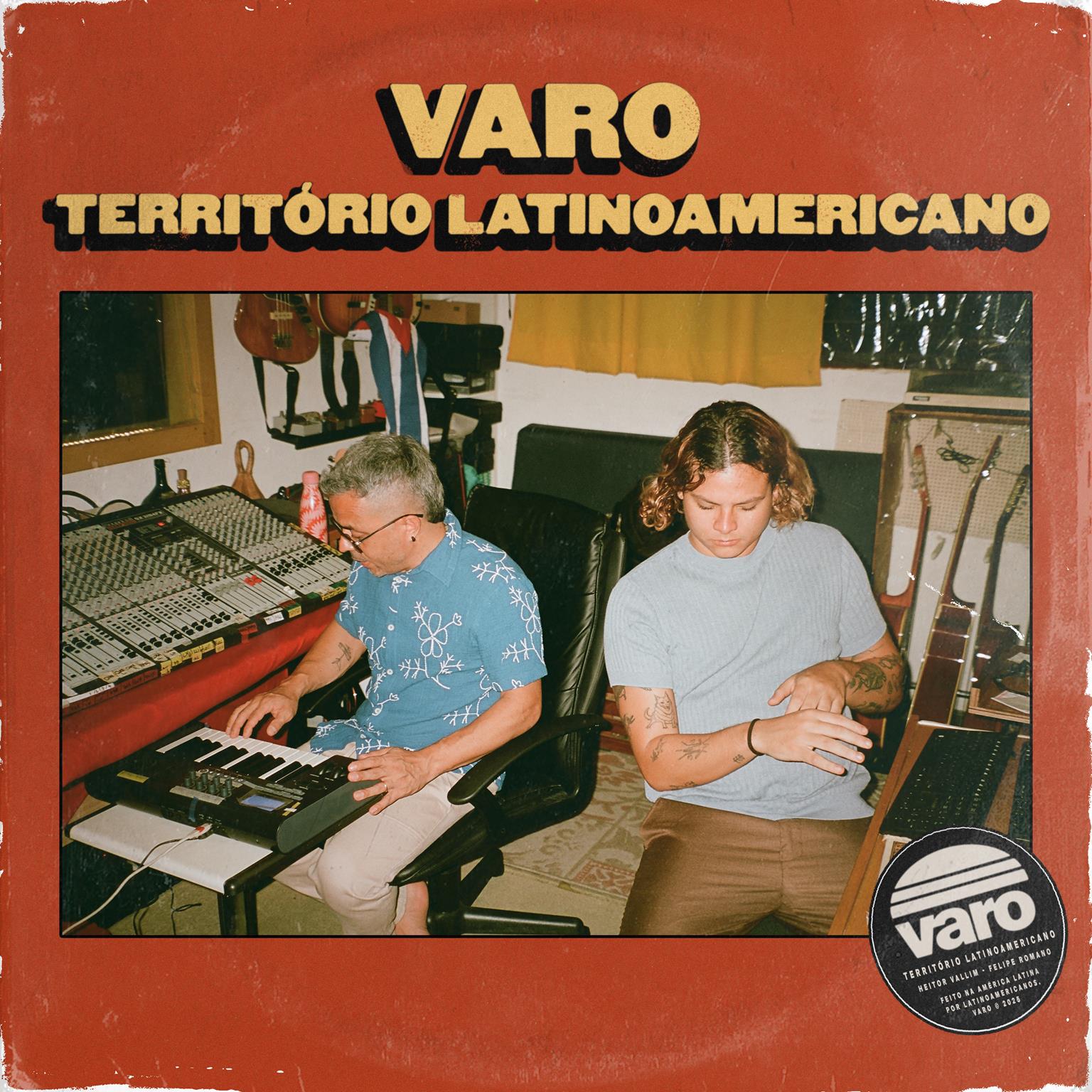
The duo VARO , formed by musicians Felipe Romano and Heitor Vallim, will release the album “Território Latinoamericano” on November 28th, available on all music streaming platforms through Marã Música. Featuring 13 instrumental tracks, the project offers a sonic journey that celebrates the plurality of Latin American peoples, blending Afro, Euro, and Amerindian influences in a musical texture that reflects the diverse identities present in Brazil’s cultural roots.
With striking melodies that blend rhythmic heritages and personal journeys, the album is born from the artists’ experiences and the territory in which they are immersed, creating a musicality described by the duo as “Latin Afro Euro Amerindian”. Inspired by urban life, “Território Latinoamericano” sounds like a soundtrack for daily activities, evoking streets, landscapes and people, as well as engaging with genres that cross cultural boundaries: piseiro, cumbia, baião, maracatu, coco pernambucano, Cuban rhythms and samba, among others.
Without lyrics, the compositions speak directly to the body and emotion, sustained by rhythms that connect the audience to their Afro-Latin heritage in a sensory and danceable experience. With a trajectory marked by national and international performances, including the Santos Jazz Festival, the PaCuba festival (Cuba), and Gliding Barnacles (Portugal), VARO establishes itself as one of the most vibrant forces in contemporary Latin American instrumental music and seeks, with this release, to expand the dialogue with new audiences and deepen the understanding of what it means to be Latin American today.
You describe this album as a soundtrack to everyday Latin American life. At what time of day, in what landscape or scene do you imagine someone listening to “Território Latinoamericano” and thinking, “this is exactly the sound of my place”?
Ah, I think so! Because it’s music made in movement, walking, and reflecting on the daily life of cities . The melodies were born from the locomotion of the territory… for example: I ride a motorcycle, right? Some melodies were created while in traffic , looking at the traffic lights, at people and places. I think you can hear our music in the ambient sound of the cities. Music that comes from walking down the street, right? But it fits in a place to dance or listen to at the beach, on the go, at work, washing dishes, cooking, cleaning the house, everywhere!
That’s because the songs were composed in relation to the Brazilian Latin American territory, and also reflect the experiences of our travels, right? We took two important trips, one to Cuba and the tour of Portugal, including a song called – Piseiro da Foz, which is a blend of Piseiro, from Santos/a “Brazilian Northeastern” style, in contrast to the small coastal town of Figueira da Foz – Portugal. I think our music resonates with the Brazilian and Latin American people, whether they are in Brazil or abroad, and will fit in some way, somewhere – on the beach, in the city, at night or during the day, wherever , and VARO His music will accompany people’s lives.
The project stems from an encounter between Afro-European and Amerindian ancestries. At what point in this creation did you feel that you were not just composing music, but accessing something that came before you, something inherited?
So, I think the question of ancestry is already in our DNA! I (Felipe), with my initial experiences in music, are totally ancestral. My grandfather influenced me to play percussion, my father took me to samba school, and that increased my taste for percussion. The ancestry of our families is indigenous and black , art is part of our upbringing, both Heitor’s and mine . I (Felipe) have had experience with maracatu for 22 years, I am the master of the Quiloa maracatu group, anyway, my godfather influenced me to play bass, it was a Brazilian music, from the border with Mato Grosso , he introduced me to Helena Meireles. As for Heitor, he had both his father and grandfather as “home guitar” musicians and ended up learning from that, from the classics of Brazilian and international music with his father’s taste, to the country-style viola music that his grandfather Séptimo listened to. So, it was kind of natural for the compositions to come out, kind of organically, because that heritage is in the duo’s own DNA.

“The melodies speak as if they were lyrics,” you state. If each track had a phrase that translated its central feeling, what would some of them be?
When we say that the melodies function as lyrics, it’s because they are accessible, popular melodies. In our performances, we always find people humming along. And the samples also provide direction, contextualize the song’s name, contribute to the track’s history, and the audio samples bring in the people, workers, folk masters, and so on. It creates a connection with the melody and establishes this dialogue with the territory. For example, Cumbia Kingston, which features the roar of a football stadium, or Malandro Praieiro itself, which features a phenomenon of the “ice head” (a Brazilian expression for someone who is very reserved or easily distracted), the voices of Dona Selma do Coco , Dona Zabé, Helena Meireles, Celia Cruz, among others .
The album explores rhythms such as cumbia, piseiro, maracatu, baião, samba and Cuban sounds. Was there any genre or rhythmic element that surprised you during the process, as if the music had decided where it wanted to go on its own?
Yes. We’re not going to say all of them, but a good portion . “Danza del Mar” ( The Sea Dance) , first comes from a song with lyrics, changes genre and the lyrics disappear, “Trilha do Mar” (The Sea Trail), which is a Pernambuco coco, rhythmically very forward, danceable, then comes a melody, unfolded, and ends up transforming into a kind of contemplative dance coco, and ends up making this fusion, the rhythm pushes forward, danceable, the melody that makes you reflect. So, I think there’s a bit of that. Where the music has a life of its own.

Felipe brings extensive experience as a popular master of Maracatu Quiloa. What teachings of maracatu—technical, philosophical, or spiritual—do you feel are present on this album?
Well, basically, the format of the compositions is organized on the principle of folk songs, praises, popular chants, and religious songs, so the issue of repetition is present. That’s why we understand that the melody has strength, as does the Indigenous song culture, which has this very strong. The melodies fix the parts of the music ; the genre, the rhythm, and the sample create a junction of the composition with the social, cultural, and territorial context. When you hear the homage, in the music Selma Heleno Zabé, or in Rainha Caribenha, or like Maracatu Batuque Nosso , which brings references to the masters through samples, of Rainha Elda Viana, Mestre Afonso, Dona Olga, or in the song Malandro Praieiro, which has a reference to Cabeça de Gelo, it ends up bringing the territory, the teaching and the ancestry, which is the pillar of Maracatu, in addition to paying homage to the ancestor and to the contemporaries who walk together in the territory, answering the question I think Quiloa is very present beyond the manifestation of Maracatu, as well as Dje ‘I aea aldeia Tabaçu Reko Ypy who also participate in the song Maracatu Batuque Nosso .
The album invites a deeper understanding of what it means to be Latin American today. For you, what was the biggest personal discovery about identity during the creation of “Território Latinoamericano”?
So I think the biggest discovery has been that this ‘ being Latin American ‘ isn’t just one thing, that Latin America isn’t uniform. We’ve noticed that individuality and authenticity end up generating a beautiful diversity, and one of the characteristics we perceive in our travels is the welcoming, the affection, the passion , the human warmth that is present throughout Latin America .
And the Latin American from Argentina is not the same as the one from Santos or Pernambuco, the Uruguayan is not the same as the one from Cuba, or the people from Pará, the Latin American from Rio Grande do Sul is not the same.
Each story is constructed quite differently, and somewhere within those differences , inexplicably, there is a similarity. Even though the colonizer tries and has tried to eliminate the indigenous and African-based people and their ancestry, imposing European culture with its language and so on, it seems there is a thread that unites us. We want to travel more to think about this!

The body is an essential part of this work, an instrumental piece of music that evokes movement. What was the most striking bodily reaction you’ve ever seen or imagined someone having while listening to one of the tracks?
I also think that the body is the total essence of the album and also of VARO . This is the heritage of the indigenous peoples of African origin, and it’s present in the language of the drum. It’s like an energetic injection so that the music flows, and then naturally it goes directly to the body. For example, when you listen to a song sitting down, you dance, moving your hips or shoulders. I feel that the songs we compose have this thing about the body all the time. I myself am now moving my head in the music as if it were already playing, because the vibration is already in us! So there’s a lot of the body and the dancing body!
Thinking about the album’s future visuals and the music video you plan to release: if the camera could capture not only images but also sensations, what colors, textures, and gestures would be essential to translate this work into audiovisual form ?
So right now we’re exploring ways to strengthen the music, creative solutions for a beautiful and fun audiovisual production. We have a draft script and a camera in hand, with many ideas in mind, for the music video of “Malandro Praia , ” which will also heavily engage with the concept of the body and popular Latin American dances, utilizing old and new images, probably on the beach.
We are once again following this principle of building territorial contexts with an album that has the characteristics of a Latin American soundtrack. So that’s it, I think we’re already moving towards ‘ Malandro Praieiro’ having a music video, and watch our videos already released, connect with our album Território Latinoamericano. We are very happy to be able to release this for you, arriba, Vale, simbora! axé!
Follow VARO on Instagram


